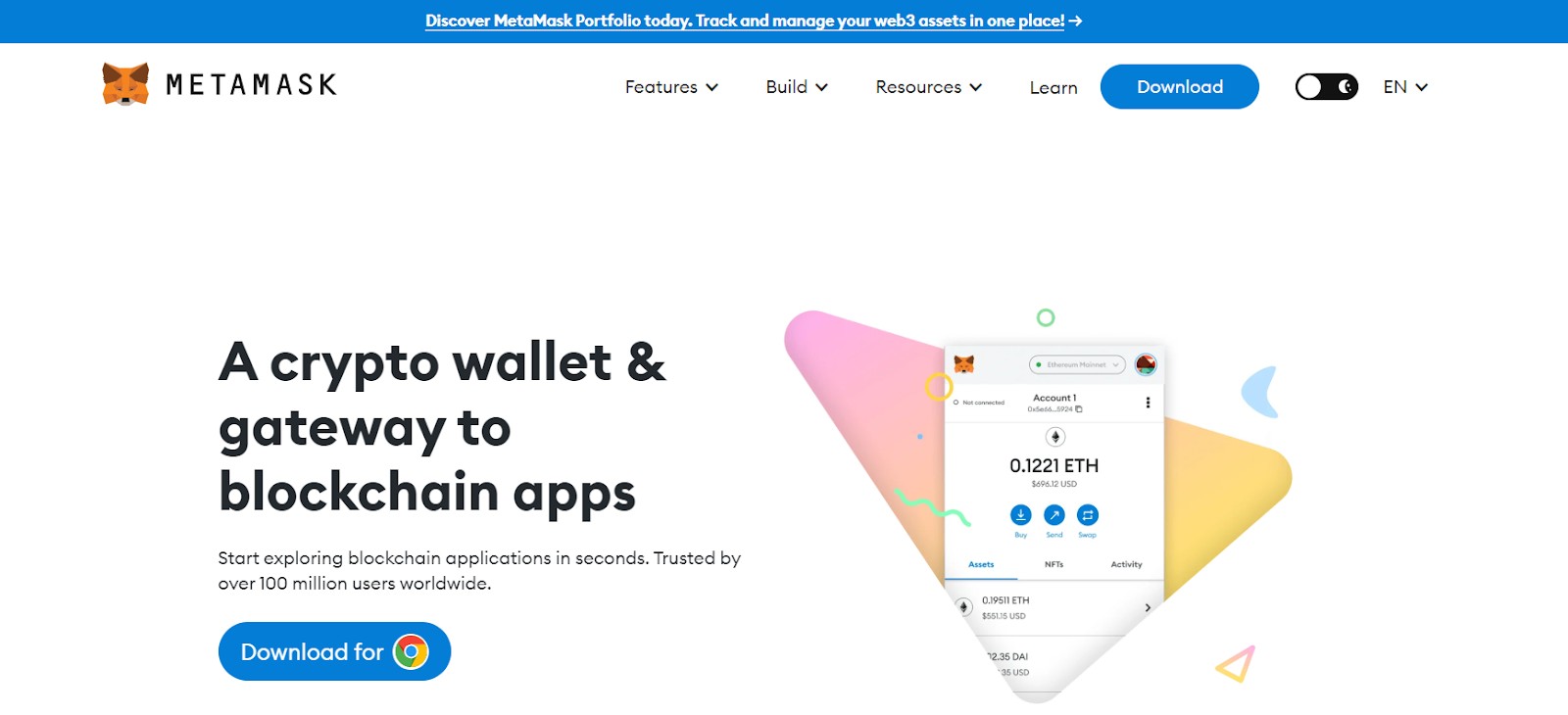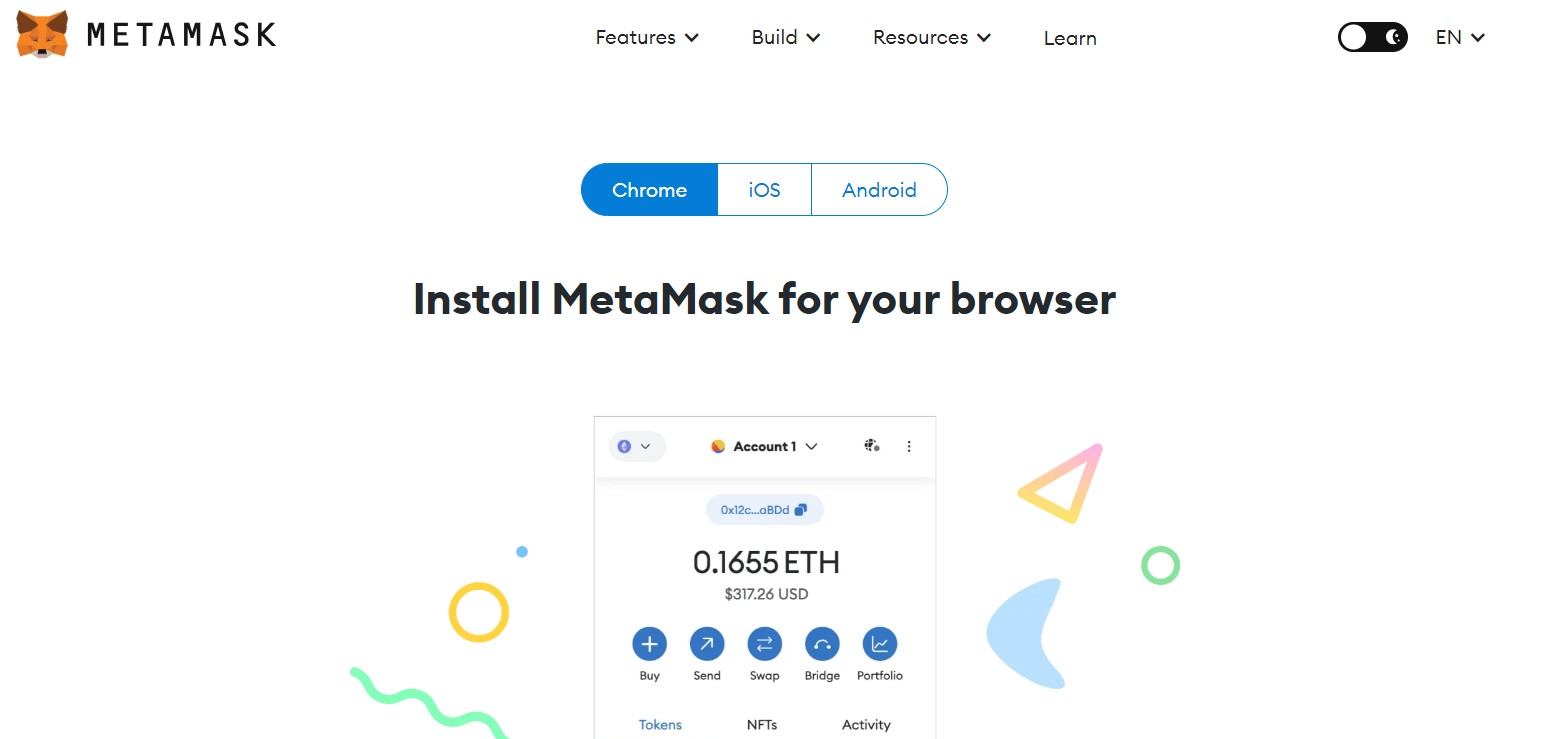How To Add USDT To MetaMask: A Step-by-Step Guide



Editorial Note: While we adhere to strict Editorial Integrity, this post may contain references to products from our partners. Here's an explanation for How We Make Money. None of the data and information on this webpage constitutes investment advice according to our Disclaimer.
How to add USDT to MetaMask:
MetaMask is a versatile crypto wallet that supports multiple blockchains, including Ethereum, BinanceSmart Chain (BSC), and Polygon. With USDT’s multi-chain capabilities, it’s essential to add the token correctly for transactions and to ensure it's visible in your wallet. In this guide, we will explore how to add USDT to MetaMask, highlight common pitfalls, and discuss both beginner and advanced considerations.
USDT is a stablecoin pegged to the U.S. dollar and exists on several networks, including Ethereum (ERC-20), Binance Smart Chain (BEP-20), and Tron (TRC-20). Each version of USDT has a unique contract address, which must be correctly inputted into MetaMask.
How to add USDT to MetaMask: step-by-step guide
Before adding USDT, ensure that you have MetaMask installed and some ETH or the appropriate network’s token to cover transaction fees.
Step 1: Install and set up MetaMask
Download MetaMask from its official website as a browser extension or mobile app.

Create a wallet and securely store your recovery phrase. This is essential, as it’s the only way to recover your wallet in case of loss.

Fund your MetaMask wallet with ETH (or the appropriate token if using other networks like BNB or MATIC) to cover transaction fees.
Step 2: Add USDT to MetaMask
MetaMask has a built-in feature to detect popular tokens like USDT automatically.
Open MetaMask and navigate to the "Tokens" tab.
Search for “USDT” in the search bar and select it.
Click "Import" to add USDT to your wallet.
If MetaMask doesn’t automatically detect USDT, you can add it manually. Follow these steps for different networks:
For Ethereum (ERC-20 USDT):
Go to the "Import tokens" section.
Click “Custom Token.”
Enter the USDT contract address: 0xdAC17F958D2ee523a2206206994597C13D831ec7
Input "USDT" as the symbol and "6" as the decimal.
Click "Add Custom Token."
For Binance Smart Chain (BEP-20 USDT):
Switch MetaMask to the BSC network.
Input the contract address: 0x55d398326f99059fF775485246999027B3197955
Follow the same steps to complete the import.
For Polygon (MATIC USDT):
Switch to the Polygon network in MetaMask.
Use the contract address: 0x3813e82e6f7098b9583FC0F33a962D02018B6803
For Tron (TRC-20 USDT):
MetaMask doesn’t support the Tron network, so USDT TRC20 cannot be added to MetaMask. For Tron-based USDT, you'll need to use a Tron-compatible wallet like TronLink.
Step 3: Confirm the token
Once you’ve input the correct details, USDT will now be visible in your MetaMask wallet. To verify your balance or transaction status, use Etherscan or the appropriate blockchain explorer.
Beginner considerations
For beginners, adding USDT to MetaMask can seem complex. Here are some key considerations:
Transaction fees. Every network charges a fee for transactions. On Ethereum, these fees can be high, so ensure you have enough ETH in your wallet. For BSC or Polygon, fees are significantly lower.
Using verified contract addresses. Only use contract addresses from trusted sources like CoinGecko or CoinMarketCap. Never copy addresses from unknown websites to avoid scams.
Security. Always secure your recovery phrase and avoid sharing your private keys. Enable two-factor authentication whenever possible.
Advanced considerations
Advanced traders may want to optimize their use of USDT across different networks for trading and DeFi applications.
Cross-chain transactions. USDT is available on multiple blockchains. Depending on network fees and your usage, you may prefer using USDT Polygon MetaMask for lower fees or BEP-20 USDT for faster transactions. Make sure you always switch to the correct network in MetaMask before sending or receiving funds.
Managing multiple USDT tokens. If you are using multiple versions of USDT (ERC-20, BEP-20, etc.), you will see separate balances in your wallet. MetaMask allows you to manage these seamlessly by switching between networks.
Risks and warnings
There are several risks associated with using MetaMask and USDT:
Incorrect contract addresses. Using the wrong contract address can result in the permanent loss of your funds. Double-check the contract address before proceeding.
High fees on Ethereum. During times of network congestion, Ethereum transaction fees can be prohibitively high. Consider using BEP-20 USDT or USDT Polygon MetaMask for lower fees.
Phishing scams. Be cautious when interacting with MetaMask support online, as scammers often impersonate MetaMask representatives. Always verify the legitimacy of websites and addresses.
Pros and cons of adding USDT to MetaMask
- Pros
- Cons
Multi-chain support. Easily manage USDT across several blockchains.
Integration with dApps. Use USDT in DeFi platforms and decentralized exchanges.
Stablecoin. USDT is less volatile than other cryptocurrencies, making it ideal for hedging.
High transaction fees on Ethereum. Costs can rise during peak network usage.
Risk of adding incorrect contracts. A single error can result in lost funds.
Needs network tokens for fees. You’ll always need to hold ETH or other native tokens to cover transaction fees.
Always double-check the USDT contract address
As a trader who has been in the markets for years, one of the most important lessons I've learned is to never rush when it comes to adding assets to your wallet. When you're dealing with USDT and MetaMask, precision is key. I’ve seen many traders make costly mistakes by simply inputting the wrong contract address or sending funds on the wrong network. Trust me, this can be a painful experience. Always double-check the USDT contract address from reliable sources like Tether's official site or CoinGecko.
Also, understand the network you’re operating on MetaMask supports multiple chains, but transaction fees and transaction speeds vary significantly. If you're trading small amounts, using BEP-20 USDT on Binance Smart Chain or Polygon USDT can save you a lot on transaction fees compared to Ethereum. However, for larger transactions or dApps that only support Ethereum, ERC-20 USDT is still king.
Also, don't underestimate security. In this business, your private keys are everything. I’ve seen people lose entire portfolios just because they didn’t secure their seed phrase or got caught in phishing schemes. Use two-factor authentication, and always be skeptical of unsolicited advice or links online.
Conclusion
In summary, adding USDT to your MetaMask wallet is a simple yet crucial task for managing stablecoins effectively. Whether you're using ERC-20, BEP-20, or Polygon USDT, the process involves adding the correct contract address to your MetaMask wallet and ensuring you have enough native tokens (like ETH, BNB, or MATIC) to cover transaction fees.
For beginners, it’s important to understand how transaction fees work and use verified contract addresses to avoid losing funds. Advanced traders can benefit from utilizing different networks to optimize fees and speed. However, always keep security in mind, especially by securing your recovery phrase and verifying addresses before transactions.
FAQs
I sent USDT to the wrong network in MetaMask, can I recover it?
Unfortunately, if you send USDT to the wrong network (e.g., BSC to an Ethereum address), it’s very difficult to recover without professional help. Contact customer support or explore cross-chain recovery services.
Can I hold both ERC-20 and BEP-20 USDT in the same MetaMask wallet?
Yes, MetaMask supports multiple networks, so you can hold ERC-20 USDT on Ethereum and BEP-20 USDT on Binance Smart Chain by switching between networks.
Is it safe to use USDT on MetaMask for DeFi apps?
Yes, but ensure you're interacting with verified dApps and have the correct contract address. Always confirm you have enough ETH or other native tokens for transaction fees.
Can I use MetaMask for USDT staking?
MetaMask doesn’t natively support staking, but you can connect it to DeFi platforms to stake USDT.
I can’t see my USDT balance on MetaMask, what should I do?
Double-check the contract address and network. Try refreshing MetaMask or switching networks if you’ve added the wrong version of USDT (e.g., ERC-20 instead of BEP-20).
Related Articles
Team that worked on the article
Rinat Gismatullin is an entrepreneur and a business expert with 9 years of experience in trading. He focuses on long-term investing, but also uses intraday trading. He is a private consultant on investing in digital assets and personal finance. Rinat holds two degrees in Economy and Linguistics.
Chinmay Soni is a financial analyst with more than 5 years of experience in working with stocks, Forex, derivatives, and other assets. As a founder of a boutique research firm and an active researcher, he covers various industries and fields, providing insights backed by statistical data. He is also an educator in the field of finance and technology.
As an author for Traders Union, he contributes his deep analytical insights on various topics, taking into account various aspects.
Mirjan Hipolito is a journalist and news editor at Traders Union. She is an expert crypto writer with five years of experience in the financial markets. Her specialties are daily market news, price predictions, and Initial Coin Offerings (ICO).
An investor is an individual, who invests money in an asset with the expectation that its value would appreciate in the future. The asset can be anything, including a bond, debenture, mutual fund, equity, gold, silver, exchange-traded funds (ETFs), and real-estate property.
Cryptocurrency is a type of digital or virtual currency that relies on cryptography for security. Unlike traditional currencies issued by governments (fiat currencies), cryptocurrencies operate on decentralized networks, typically based on blockchain technology.
Day trading involves buying and selling financial assets within the same trading day, with the goal of profiting from short-term price fluctuations, and positions are typically not held overnight.
Forex leverage is a tool enabling traders to control larger positions with a relatively small amount of capital, amplifying potential profits and losses based on the chosen leverage ratio.
Ethereum is a decentralized blockchain platform and cryptocurrency that was proposed by Vitalik Buterin in late 2013 and development began in early 2014. It was designed as a versatile platform for creating decentralized applications (DApps) and smart contracts.






























































































































